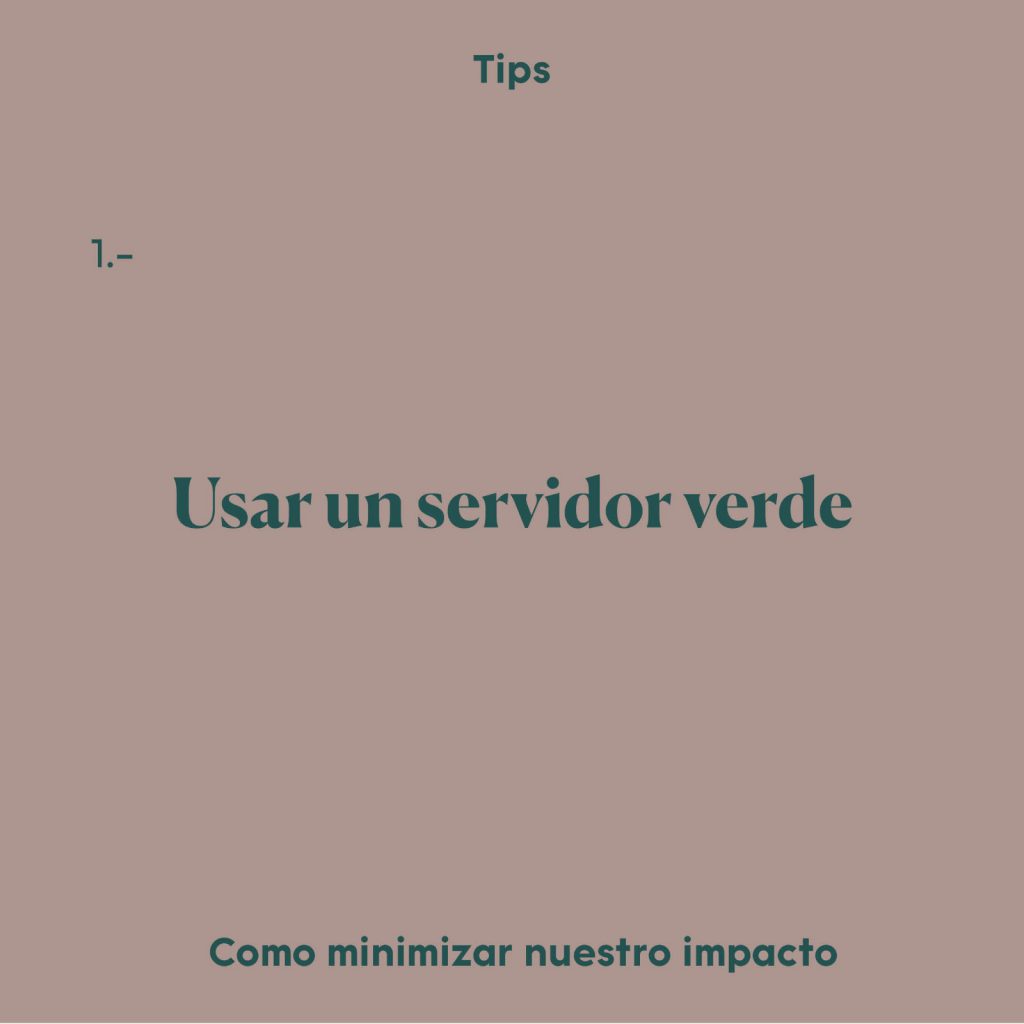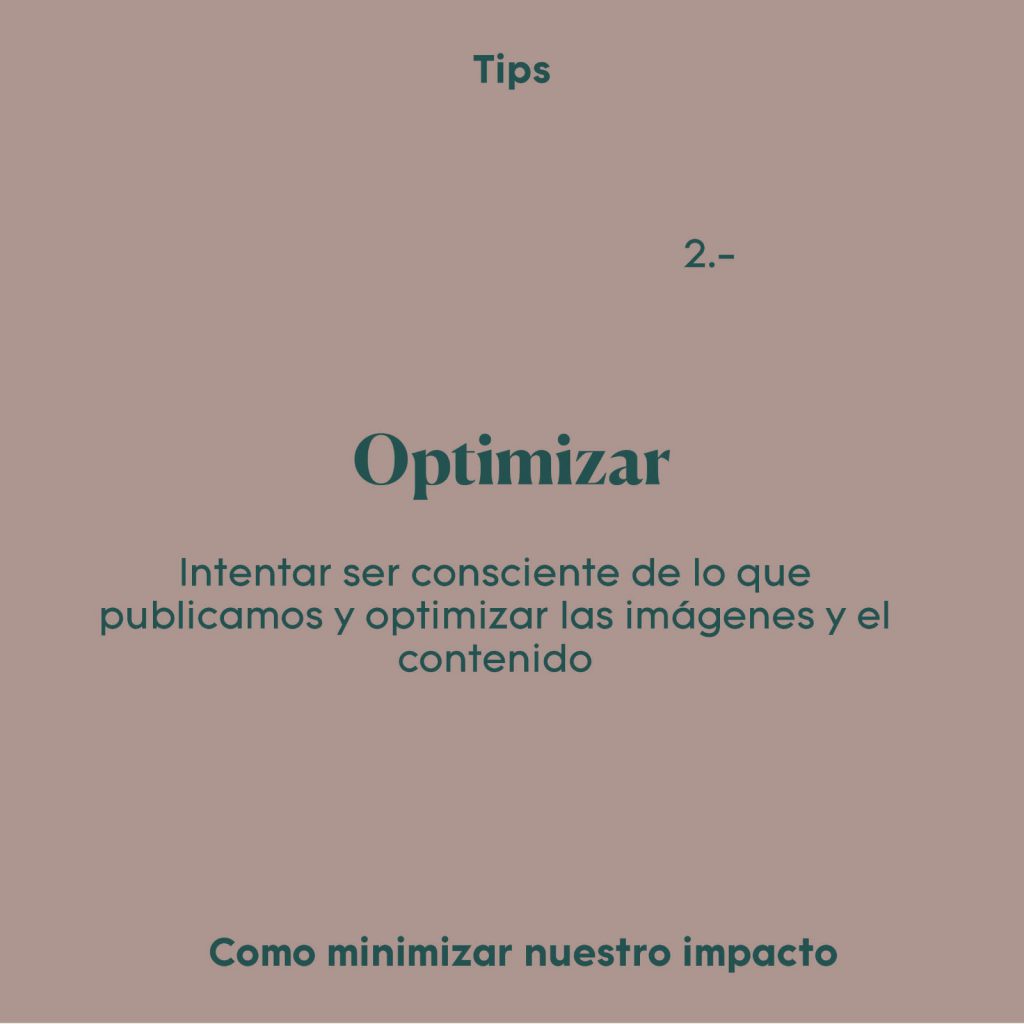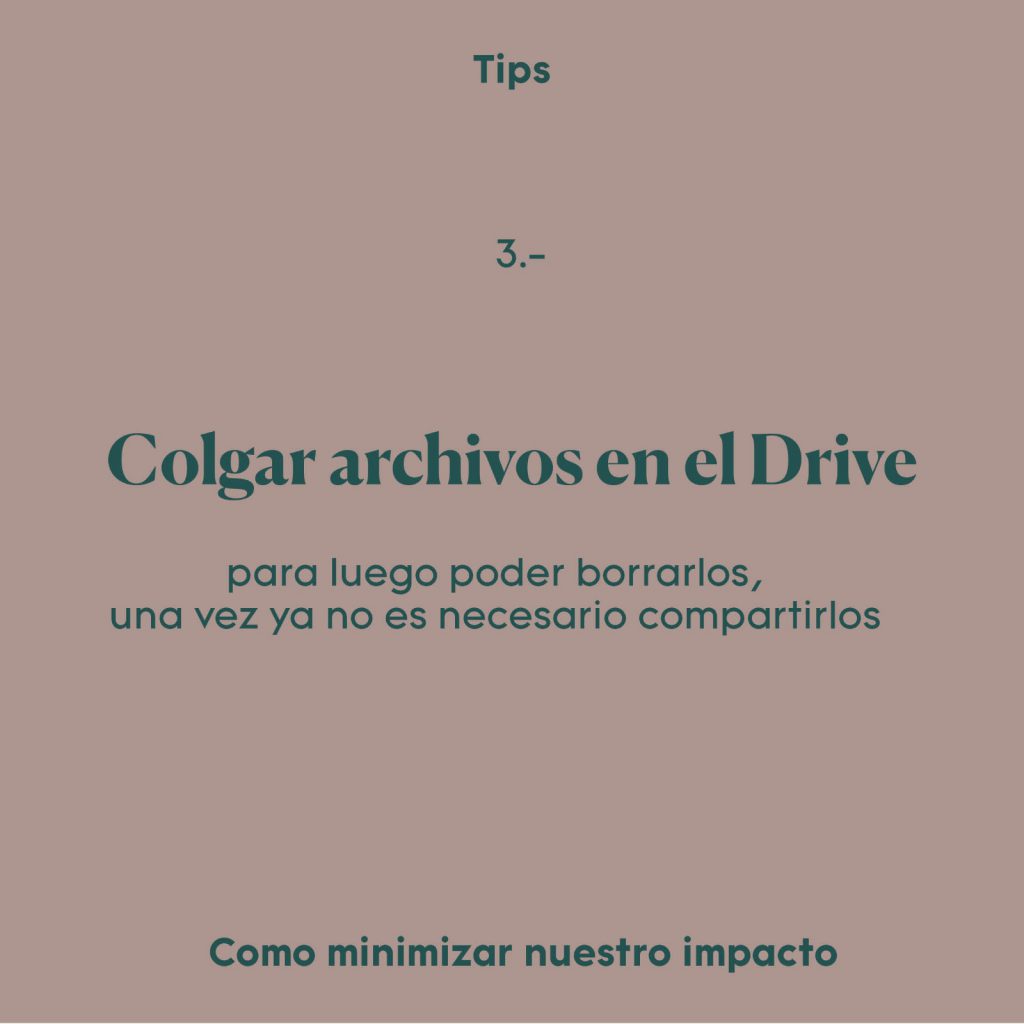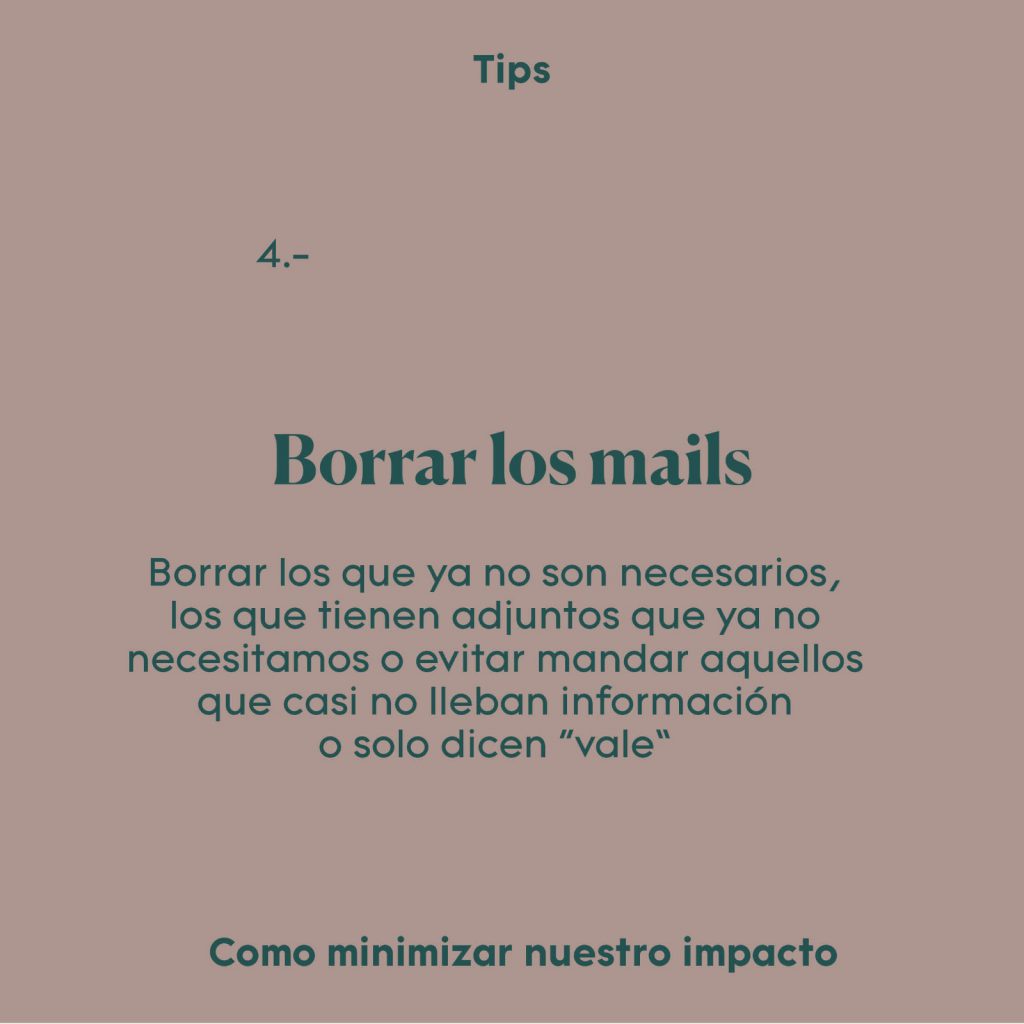Digital pollution
“We can get an idea of the unexpected carbon footprint that all this causes”
Date: November 25, 2021
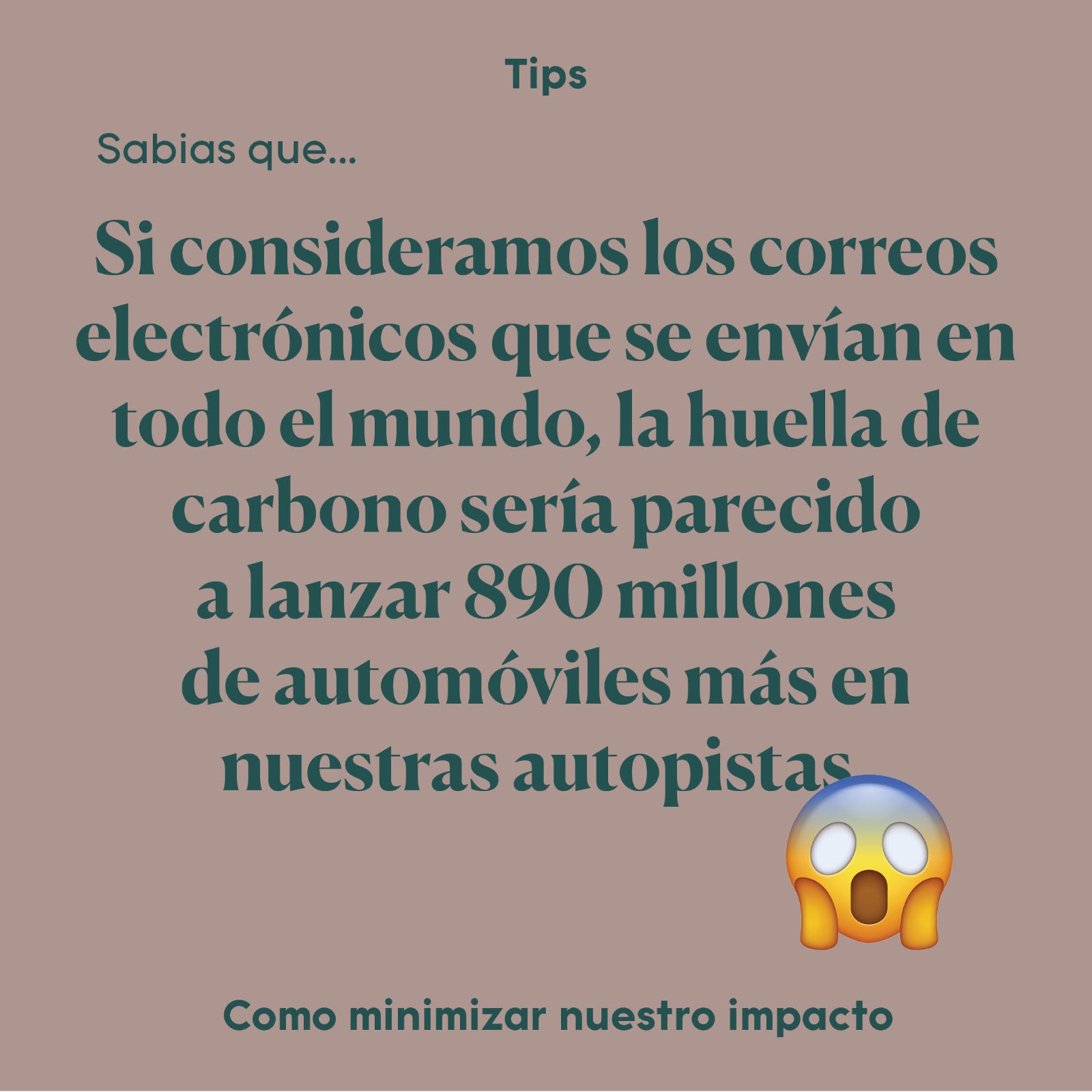
Do you know that “the energy we consume when we use new technologies to communicate, pollute ”? And what “in a year, sending 20 emails a day, we are emitting an amount of CO2 similar to that generated by a car that makes a trip of 1000 km”? “The reality is that behind the harmless mail there is a consumption of natural resources on different scales” *. According to a study by the UPM ** “Every minute 187 million emails are sent in the world, 38 million WhatsApp messages, 18 million messages in IMessage, 3.7 million searches are carried out on Google, 1.1 million swipes on Tinder, 4.3 million videos are seen on YouTube, 266,000 hours of Netflix, … And all this, email generates between 0.3 and 50 g of CO2 (depending on its characteristics), each search we perform on the internet it generates between 1 and 10 g of CO2, etc. We can get an idea of the unexpected carbon footprint that all this causes ”.
All these data are not an invention or an “alarmist fake new”: they are some of the conclusions resulting from various studies and works by the hand of, among many, Greenpeace with its Click Clean*** study, who report that “around 7 % of the energy consumed on the planet derives from the energy demand associated with what some call digital capitalism ”or from scholars such as Amalia Santesteban Azanza, who remarks, in her Study on Digital Pollution****, that it does not mean that “We should stop using social networks, email or streaming services, because they are inevitably part of our society, our way of relating and communicating, but we can adopt a critical position.”
We keep your reflection, and with all the actions that we can carry out individually, such as “think twice before sending anything, make sure that what we read makes sense and are not fake news, are some of the practices that we can adopt to reduce the impact of the cloud, among others; reduce the weight of the messages we send by mail, delete emails that are useless, unsubscribe on platforms in disuse, do not share chains of messages in which a fateful future is predicted in case of not forwarding it, … In short, do an act of reflection, but above all and most importantly, become aware of this problem that, in addition, grows exponentially year after year (* In 2018, the cloud demanded a consumption of between 6% and 10% of the world energy and it is expected that by 2030 it will be 21% of it”).”
*https://www.elcomercio.com/afull/correoselectronicos-emails-contaminacion-medioambiente-impacto.html
** https://blogs.upm.es/inambiental/2020/04/15/la-contaminacion-digital/
*** http://www.clickclean.org/spain/es/
**** https://blogs.upm.es/inambiental/2020/04/15/la-contaminacion-digital/


